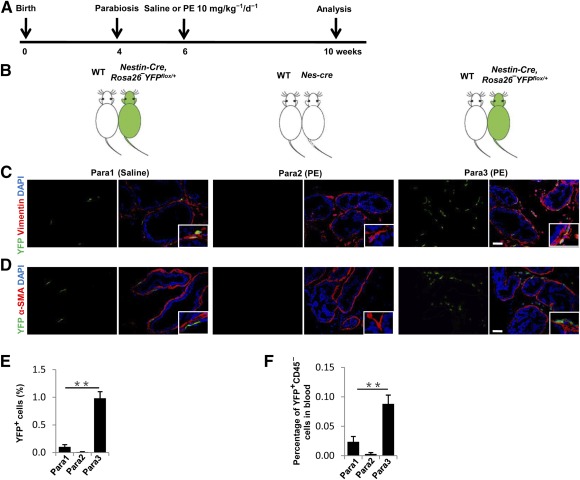Figure 4.

Parabiotic partner‐derived nestin+ cells predominantly give rise to fibroblasts in prostate stroma. (A, B): Schematic showing the experimental strategy (A) and parabiotic pairings setting (B). (C): Double‐immunohistofluorescence analysis of prostate tissue sections from wild‐type mice that were linked parabiotically to Nestin‐Cre or Nestin‐Cre, Rosa26‐YFPflox/+mice with saline‐ or PE‐treatment using antibodies against YFP (green) and vimentin (red). Scale bar = 50 μm. (D): Double‐immunohistofluorescence analysis of prostate tissue sections from wild‐type mice that were linked parabiotically to Nestin‐Cre or Nestin‐Cre, Rosa26‐YFPflox/+mice with saline‐ or PE‐treatment using antibodies against YFP (green) and α‐SMA (red). Scale bar = 50 μm. (E): Quantitative analyses of the ratio of YFP+ cells to total cells in prostate tissue sections. (F): Flow cytometry analysis of YFP+CD45– (percentage of total cells counted) in blood of wild‐type mouse partners. n = 4 per group. Data are shown as the mean ± SD. ∗∗, p < .01 compared with the Para1 group. Statistical significance was determined by multifactorial analysis of variance. Abbreviations: DAPI, 4′,6‐diamidino‐2‐phenylindole; PE, phenylephrine; α‐SMA, α‐smooth muscle actin.
